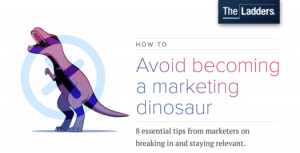If you’re a video publisher who wants to monetize your content, Facebook has some good news for you. The social media giant is now allowing commercials to run during videos.
So if you’ve avoided uploading videos to Facebook in the past because you didn’t want to go through the hassle of producing a high-quality mini-movie only to see no return from it, consider doing so now.
Here’s what you need to know about Facebook mid-roll ads and how video will impact the future of Facebook.
What Are Mid-Roll Ads, Anyway?
If you’re unfamiliar with the phrase “mid-roll ads,” it basically means that the ads run well after content has started playing. That’s in contrast to ads that run at the beginning of the content (“pre-roll ads”).
You’ve probably watched more than one video on YouTube that plays an ad at the very beginning and gives you a chance to skip it after five seconds. That’s a pre-roll ad.
A while back, Facebook decided that pre-roll ads were too user-hostile. That was probably a good move as it’s likely that countless users would have just scrolled past a video (even a good one) that started showing an ad at the very beginning.
The mid-roll ads will play at the 20-second mark of a video that’s at least 90 seconds in length. That means video producers will need to make sure that the first 20 seconds of the video reel in viewers so they don’t bail once they see a commercial start playing.
Earning Money
When Facebook first dabbled with monetization of video content, the company kept all the revenue for itself. That was during an initial testing phase, though.
Now, Facebook keeps 45% of the revenue and lets the publisher keep the other 55%. That’s exactly the same split that YouTube uses.
When It Wasn’t Worth It
In the past, publishers complained because they weren’t getting any revenue from the videos they uploaded to Facebook. That was even the case when those videos went viral.
BuzzFeed, a company known for generating viral content, complained because its videos weren’t generating income.
Other publishers devoted a lot of time and money into their video productions. Then, they uploaded them to Facebook and saw no revenue for their efforts.
Some companies just gave up on creating video content for Facebook.
Now, however, Facebook is enabling publishers to earn money from their videos. As a result, you can expect to see more organizations produce video content and upload it to Facebook.
That’s a win-win. Publishers generate revenue and Facebook gets free content while taking almost half of the advertising income.
A Recent Emphasis on Video
A couple of years ago, Facebook shifted its strategy to emphasize (at least more than before) video content. By last year, Facebook users were watching 100 million hours every day.
But at that time the company refused to run pre-roll ads. So publishers weren’t making any money.
Facebook tried to remedy that situation in 2015 with a separate video section. That allowed publishers to share revenue from video ads.
In 2016, Facebook allowed publishers to produce videos sponsored by advertisers. Some publishers, including BuzzFeed, cashed in on that program.
Most recently, Facebook started with mid-roll ads. We’ll have to wait and see if that’s the successful formula for monetization.
News Feed Videos
Mid-roll ads will show up in all types of Facebook videos. That includes videos that appear in the news feed.
Additionally, Facebook has indicated that it would run mid-roll ads in live videos. That could disrupt the content of live videos significantly, so it remains to be seen if that’s a winning strategy.
Also, Facebook’s new ad policy could lead the company to take a different approach to how it counts a video “view.”
Previously, Facebook counted a view as any time a user watched a clip for three seconds or more. That didn’t seem particularly fair since the social media platform automatically plays videos as users scroll through their feed.
But now that mid-roll ads only play at the 20-second mark, it’s likely that Facebook will have to adjust what it counts as a view.
Video: The Future of Facebook
As we’ve seen, Facebook began emphasizing video content a couple of years ago. That change in strategy will likely affect the social media platform for years to come.
For starters, non-video content is receiving less attention.
A recent study published by NewsWhip, shows that likes, comments, and shares of linked articles from major news sites declined sharply between July 2015 and April 2016.
Those stats don’t seem to have upset senior management at Facebook, though.
Additionally, another study shows that Facebook videos receive seven times the shares that links receive. As a result, publishers have a strong incentive to produce video content.
There’s no doubt that Facebook is strongly favoring video content. You can expect to see that trend continue well into the future.
Digital & Social Articles on Business 2 Community(109)
Report Post





